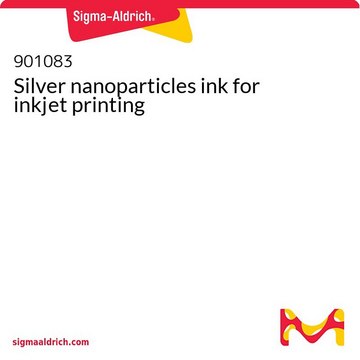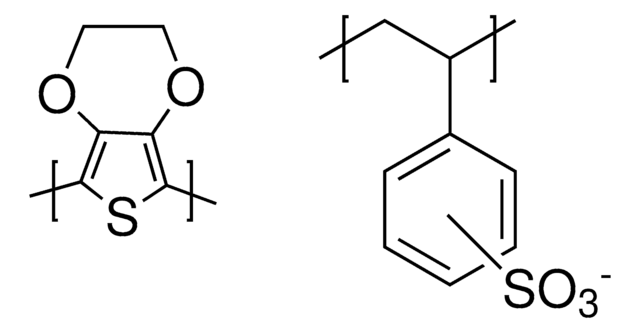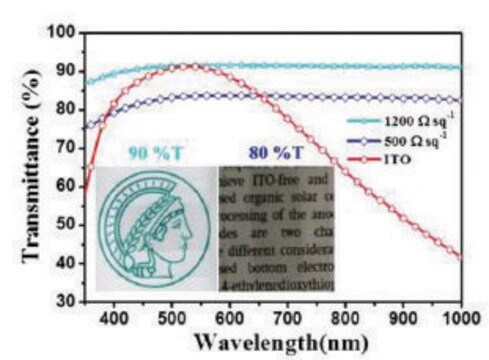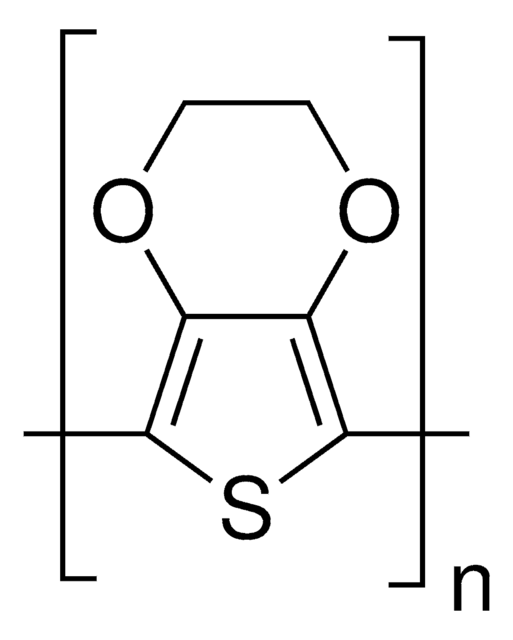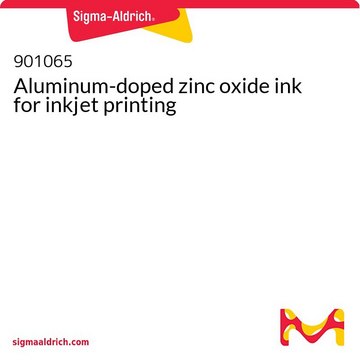739316
PEDOT:PSS
conductive inkjet ink, 0.8% aqueous dispersion
Synonyme(s) :
Orgacon™ IJ-1005, PEDOT:PSS, Poly(2,3-dihydrothieno-1,4-dioxin)-poly(styrenesulfonate)
About This Item
Produits recommandés
product name
Poly(3,4-ethylenedioxythiophene)-poly(styrenesulfonate), 0.8% in H2O, conductive inkjet ink
Niveau de qualité
Forme
liquid
Contient
1-5% Ethanol
5-10% Diethylene glycol
Caractéristiques du produit alternatif plus écologique
Design for Energy Efficiency
Learn more about the Principles of Green Chemistry.
sustainability
Greener Alternative Product
Concentration
0.8% in H2O
Résistance de la couche
110 Ω/sq
Indice de réfraction
n20/D 1.340
pH
1.5-2.5
Viscosité
7-12 cP(22 °C)
Densité
0.985 g/mL at 25 °C
Autre catégorie plus écologique
, Enabling
Température de stockage
2-8°C
Vous recherchez des produits similaires ? Visite Guide de comparaison des produits
Description générale
PEDOT:PSS has high electrical conductivity and good oxidation resistance, the properties which make it suitable for electromagnetic shielding and noise suppression. Thus, the polymeric film formed possesses high transparency throughout the visible light spectrum and even in near IR and near UV regions, displaying virtually 100% absorption from 900-2,000 nm. No absorption maximum from 400-800 nm was observed.
Application
Informations légales
Code de la classe de stockage
10 - Combustible liquids
Classe de danger pour l'eau (WGK)
WGK 2
Point d'éclair (°F)
Not applicable
Point d'éclair (°C)
Not applicable
Faites votre choix parmi les versions les plus récentes :
Déjà en possession de ce produit ?
Retrouvez la documentation relative aux produits que vous avez récemment achetés dans la Bibliothèque de documents.
Les clients ont également consulté
Articles
A detailed article on conducting polymer materials for flexible organic photovoltaics (OPVs) applications.
New conducting and semiconducting polymers for plastic electronics
Find advantages of inorganic interface layer inks for organic electronic & other applications.
Conducting polymers such as polyaniline, polythiophene and polyfluorenes are now much in the spotlight for their applications in organic electronics and optoelectronics.
Notre équipe de scientifiques dispose d'une expérience dans tous les secteurs de la recherche, notamment en sciences de la vie, science des matériaux, synthèse chimique, chromatographie, analyse et dans de nombreux autres domaines..
Contacter notre Service technique
